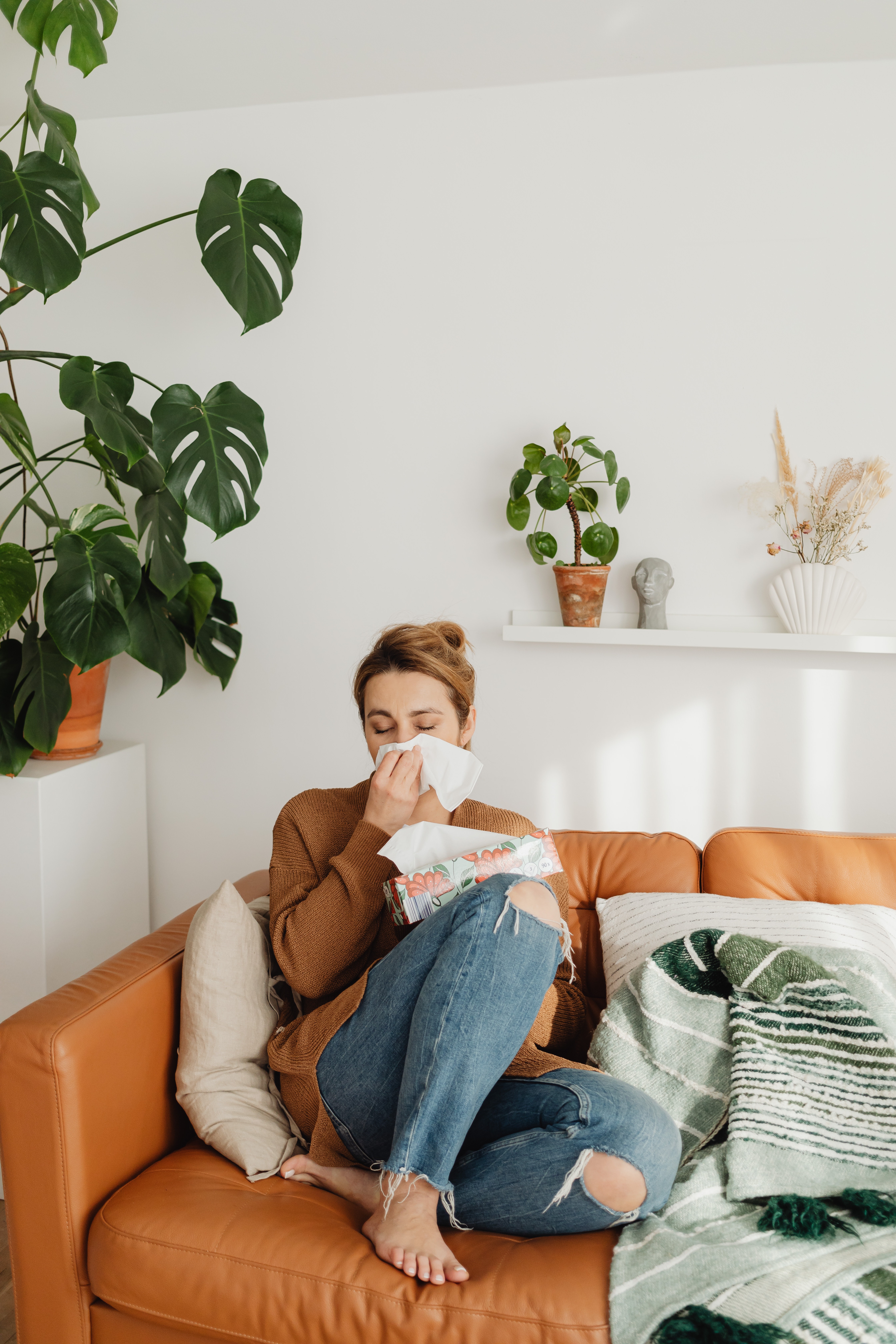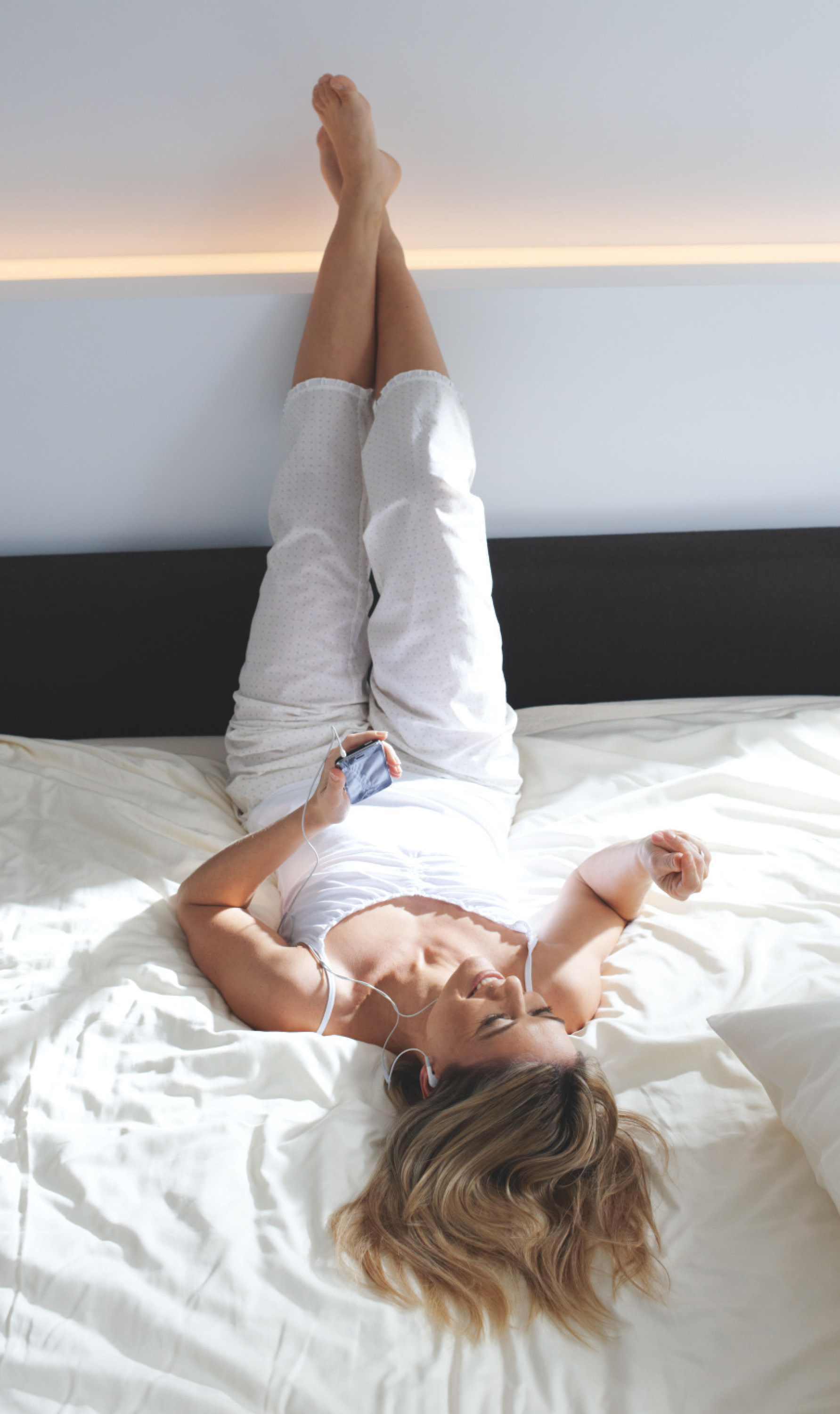
How to Manage Pollen Allergies at Home
As spring approaches, we all look forward to warmer weather and spending more time outdoors. However, when we suffer from pollen allergies, the arrival of spring can mean sneezing, runny noses and itchy eyes.
While there's no cure for pollen allergies, you can take steps to reduce your allergy symptoms. In this article, we'll share some tips for managing pollen allergies that you can put in place indoors.
Did you know there are over thirty different types of pollen? Pollen doesn't just come from grass but also trees and weeds, and people can be allergic to different types.
The pollen calendar below shows the average pollen season in Europe, and which types of pollen are most common.
| JAN | FEB | MAR | APR | MAY | JUN | JUL | AUG | SEP | OCT | NOV | DEC | |
|
Tree pollen, including alder, hazel and birch | X | X | X | X | X | X | X | |||||
|
Grass pollen, including rye, timothy and meadow grass | X | X | X | X | ||||||||
|
Weed pollen, including nettle, mugwort and ragweed | X | X |
You can check your local pollen forecast through resources like the European Aeroallergen Network (EAN). This provides daily pollen counts and forecasts for different regions in Europe. 1

Springtime is pollen time! Pollen is one of the most common triggers of seasonal allergies. 8% (19.2 million) of adults and 7% (5.2 million) of children suffer from pollen allergies worldwide.
If you're experiencing pollen allergy symptoms, there are several solutions you can try to reduce your exposure and make you feel better.
Here are eight ways you can ease the pain, from simple things you can do in five minutes to more long-term solutions:
This is the easiest way to prevent pollen from entering your home. If you need to open a window, try to do so early in the morning or late at night when pollen levels are lower. 2
Pollen can stick to your hair and clothes, so showering after spending time outside can wash away any allergens. Hot water can also help you feel less congested too. 3
Regularly cleaning your home can reduce pollen and other allergens. Using a vacuum cleaner with a HEPA filter traps pollen, dust mites and other small particles. 4
Regularly wash your bedding in hot water, especially during pollen season. 5
Outdoor pets can track pollen into your home on their fur. If you prefer a furry friend over a goldfish, regularly grooming your pets and wiping them down with a damp cloth can reduce the number of allergens they bring indoors. 6
This helps reduce moisture levels in your home, as mould spores can also trigger allergy symptoms. 7
Pollen can easily collect in carpets, especially ones with long fibres. 8
An anti-pollen filter will filter out pollen and other airborne allergens. It's important to regularly replace it to ensure it works as effectively as possible. 9,10
If you don't have an HRV (heat recovery ventilation) unit, consider investing in one. While there will be an upfront cost to buy and install an HRV, it's the most effective long-term solution to reduce pollen count at home. Combining an HRV system with an anti-pollen filter will ensure you can enjoy fresh, filtered air while keeping the windows closed.
HRV (heat recovery ventilation) systems help maintain a healthy indoor climate by exchanging polluted indoor air with fresh outdoor air while retaining energy. An anti-pollen filter set can be placed within the HRV unit. This contains an extra fine-woven filter designed to keep your house pollen-free. It prevents small particles such as pollen and (fine) dust in the outside air from entering the home.

Managing pollen allergies is an ongoing process, and what works for one person may not work for another.
Be patient, and don't be afraid to try different strategies until you find what works best for you. We hope these tips help reduce your exposure to pollen and mean you can make the most of the spring season.
1 European Aeroallergen Network website: https://www.polleninfo.org/ & Asthma and Allergy Foundation of America. (2021). Allergy Proof Your Home.
2 American Academy of Allergy, Asthma, and Immunology. (2021). Tips to Remember: Allergy-Proof Your Home. Retrieved from https://www.aaaai.org/conditions-and-treatments/library/allergy-library/allergy-proof-your-home
3 Asthma and Allergy Foundation of America. (2021). Allergy Proof Your Home.
4 'Indoor Air Quality: Use a Vacuum Cleaner with a HEPA Filter' EPA, https://www.epa.gov/indoor-air-quality-iaq/indoor-air-quality-use-vacuum-cleaner-hepa-filter
5 Mayo Clinic. (2021). Allergies: Self-care.
6 'Allergies to Pets' American Academy of Allergy, Asthma & Immunology (AAAAI), https://www.aaaai.org/conditions-and-treatments/library/allergy-library/pet-allergy
7 American Academy of Allergy, Asthma, and Immunology. (2021). Tips to Remember: Allergy-Proof Your Home.
8 Asthma and Allergy Foundation of America. (2021). Allergy Proof Your Home.
9 American Academy of Allergy, Asthma, and Immunology. (2021). Tips to Remember: Allergy-Proof Your Home.
10 Mayo Clinic. (2021). Allergies: Self-care. & Allergy and Air. (n.d.). The Benefits of Using a Pollen HRV Filter for Allergies.